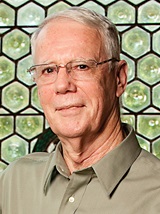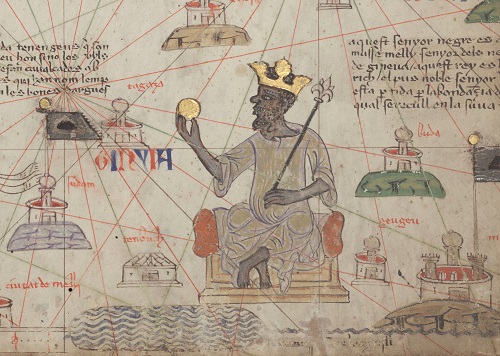 The College Board is encouraging innovation in its Advanced Placement (AP) courses, as the long-prominent curriculum continues to evolve. One innovation—the development of a set of AP Capstone courses—is leading toward a high school course on the history of the African diaspora.
The College Board is encouraging innovation in its Advanced Placement (AP) courses, as the long-prominent curriculum continues to evolve. One innovation—the development of a set of AP Capstone courses—is leading toward a high school course on the history of the African diaspora.
For decades, AP courses have set a standard of college-level courses for high school students in widely taught disciplines in the sciences, humanities, and social sciences. Over a school year, students follow a recommended curriculum and take a nationally scored exam. Those who score well (especially 4 or 5 on a scale of 5) may get college credit. Drawing on the services of the Educational Testing Service (ETS), the College Board has expanded AP offerings over the years, and as a result the national educational system has developed new strengths.
In history, the AP US History course has the largest enrollment, followed by AP World History and AP European History. The US history course has encouraged healthy debate on priorities in American history, and the world history course has been important in developing public understanding of global approaches to the past. Nevertheless, concerns about AP history courses have emerged. The student population enrolled in AP courses is insufficiently diverse, and the courses can address only so many topics.
In response, the College Board has developed two new frameworks: AP Capstone and AP Seminar. For these courses, school districts propose a course and a syllabus. The College Board then reviews the curriculum and pedagogy, emphasizing College Board standards for the latter before approving. Students take one semester of classroom instruction and, in the second semester, work individually and in groups on research and writing projects. At the end of the academic year, they write an essay exam in response to a prompt for all Capstone students. Readers selected by the College Board score the exams, again on the 5-point scale. Steady improvements in the consistency of scoring, as monitored by ETS, help allow for the flexibility of these new frameworks.
From this context arose the possibility of a Capstone course on the history of the African diaspora. The idea gained attention through discussion within the College Board and ETS, and within the broader educational community. Within the past two years, under the leadership of Kassie Freeman, the African Diaspora Consortium (ADC) formed to develop such a course. Freeman, a scholar in international education and former president of the Southern University System in Louisiana (the only historically black university system in the United States), assembled a wide range of educators and scholars to collaborate with the College Board and ETS in this effort. In this case, the course would be developed by a national organization rather than a local school system. School systems wishing to use the curriculum in a Capstone course would propose it to the College Board, with the option of revising the ADC version of the course.
 Since the ADC has formed, it has appointed a board of directors, expanded its scale, and is seeking funding. Work on the curriculum has advanced considerably. The framework of the course is world-historical. It addresses the African continent and all the regions of the African diaspora in a chronological framework, from 1400 to the present. In thematic terms, it emphasizes imperialism, resistance, and cultural practice, giving particular emphasis to the dispersal of communities of African ancestry throughout the Atlantic region, as well as the Indian Ocean region, Europe, West Asia, and North Africa.
Since the ADC has formed, it has appointed a board of directors, expanded its scale, and is seeking funding. Work on the curriculum has advanced considerably. The framework of the course is world-historical. It addresses the African continent and all the regions of the African diaspora in a chronological framework, from 1400 to the present. In thematic terms, it emphasizes imperialism, resistance, and cultural practice, giving particular emphasis to the dispersal of communities of African ancestry throughout the Atlantic region, as well as the Indian Ocean region, Europe, West Asia, and North Africa.
The pedagogy, curriculum, and overall design of the course are intended to reach beyond the existing AP constituency. The course is to be challenging but energizing; it is expected to be of particular interest to African American students curious about their own heritage and how it fits into the diaspora. The ADC also hopes that students who have not viewed themselves as AP students in the past now will, becoming motivated to take more AP courses.
The course traces changes on the African continent and links both among African regions and between regions and the diaspora. It is chronologically organized, addressing community and dispersion (1400–1600), survival (1600–1800), emancipation (1800–1900), citizenship (1900–60), and equality (1960 to the present).
The course’s pedagogy is to be digitally relevant, encouraging students to learn through research, engagement, and interaction with multiple audiences. The course prioritizes group work, students’ development of their own interpretations, and reliance on a wide range of resources (the Internet, cultural and literary materials, and historical texts). Once student abilities to collaborate and debate are developed, emphasis turns to the analysis of evidence and crafting of essays. Throughout the course, students are encouraged to acquaint themselves with the regions and communities of the African diaspora and how these communities participated in the major transformations of their times.
The course emphasizes cultural issues, so the ADC has identified three noted artists—in drama, music, and visual art—who will work with selected students in advanced workshops. Both teachers and students will have to navigate the richness of source materials and topics in this curriculum. They will select their favorite issues from the many available and articulate the logic of their choice. For instance, the assessment for the concluding section of the course asks students to identify future possibilities for equality and inequality in African diaspora communities and to identify areas of cultural production that make positive contributions to the goal of social equality.
It has been a source of pleasure and excitement to me to have been a part of ADC, contributing especially to development of the curriculum. I have served as the principal consultant on curriculum, drawing particularly on the framework of my book The African Diaspora: A History through Culture (Columbia Univ. Press, 2009). Ernest Morrell of the Institute for Urban and Minority Education at Teachers College, Columbia University, and Nafees Khan of the Education School at Clemson University have contributed similarly to the organization of pedagogy. Members of the ADC from Colombia, Bermuda, Brazil, and the United Kingdom have all contributed materials and regional perspectives to the course.
The pedagogy, curriculum, and overall design of the new course are intended to reach beyond the existing AP constituency.
The course will convey a range of historical narratives, from the experiences of slavery and work in the Americas and Africa to the literary advances of writers in the Caribbean, Europe, North America, and Africa. Other narratives trace the campaign for citizenship throughout the 20th century and the remarkable developments in popular culture in every corner of the African diaspora—including music, sport, and dress. The contributions of African diasporic peoples to the spread of democratic ideals will be prominent, too.
The University of Pittsburgh and the University of Alabama expect to sponsor pilot courses in the public schools of Pittsburgh and Birmingham within the year. If all goes well, the course would then be open to being offered by school systems in the United States.
This experiment, like others now being formulated, works from what has been learned about advanced courses for high school students, applies those lessons to subject matter that has not previously been highlighted, and modifies it to extend high-level courses to a wider range of students. The African diaspora course emphasizes the links among communities in a large segment of humanity, focusing on their contributions to the changes of the modern world. This means that the course promotes classroom analysis of the changing issues of race, cultural and social inequality, and the campaigns of disadvantaged groups to achieve a position of dignity in society.
Patrick Manning is president of the AHA.

This work is licensed under a Creative Commons Attribution-NonCommercial-NoDerivatives 4.0 International License. Attribution must provide author name, article title, Perspectives on History, date of publication, and a link to this page. This license applies only to the article, not to text or images used here by permission.
The American Historical Association welcomes comments in the discussion area below, at AHA Communities, and in letters to the editor. Please read our commenting and letters policy before submitting.
Tags: From the President AHA Leadership Resources for K-12 Educators Africa Teaching Resources and Strategies
Comment
Please read our commenting and letters policy before submitting.






